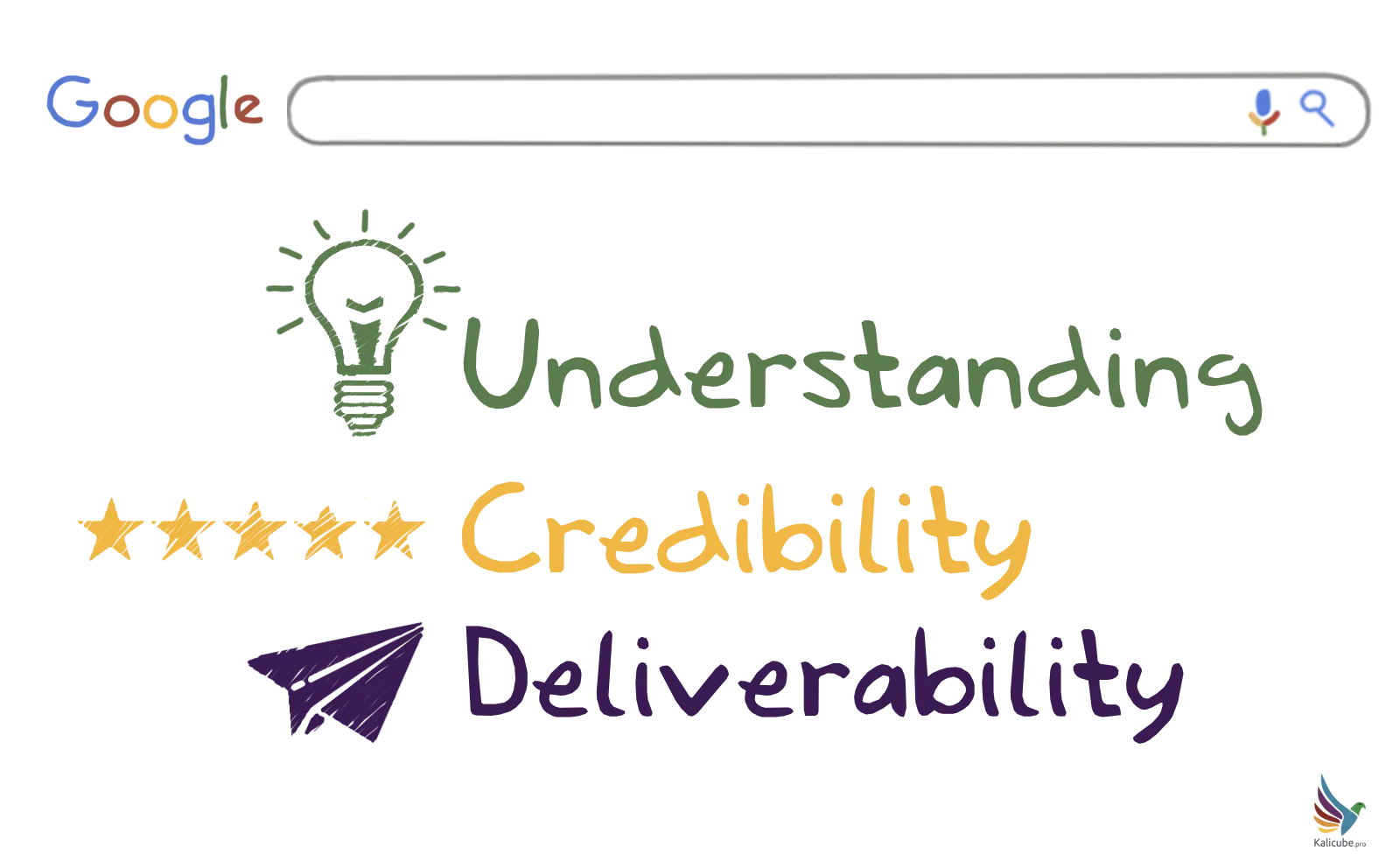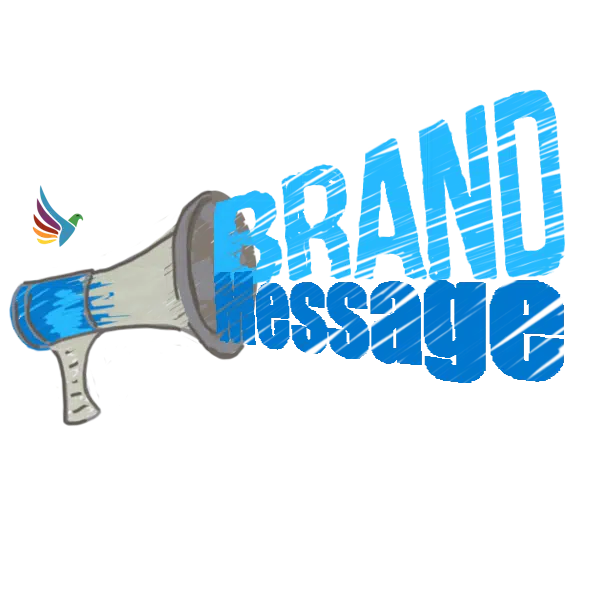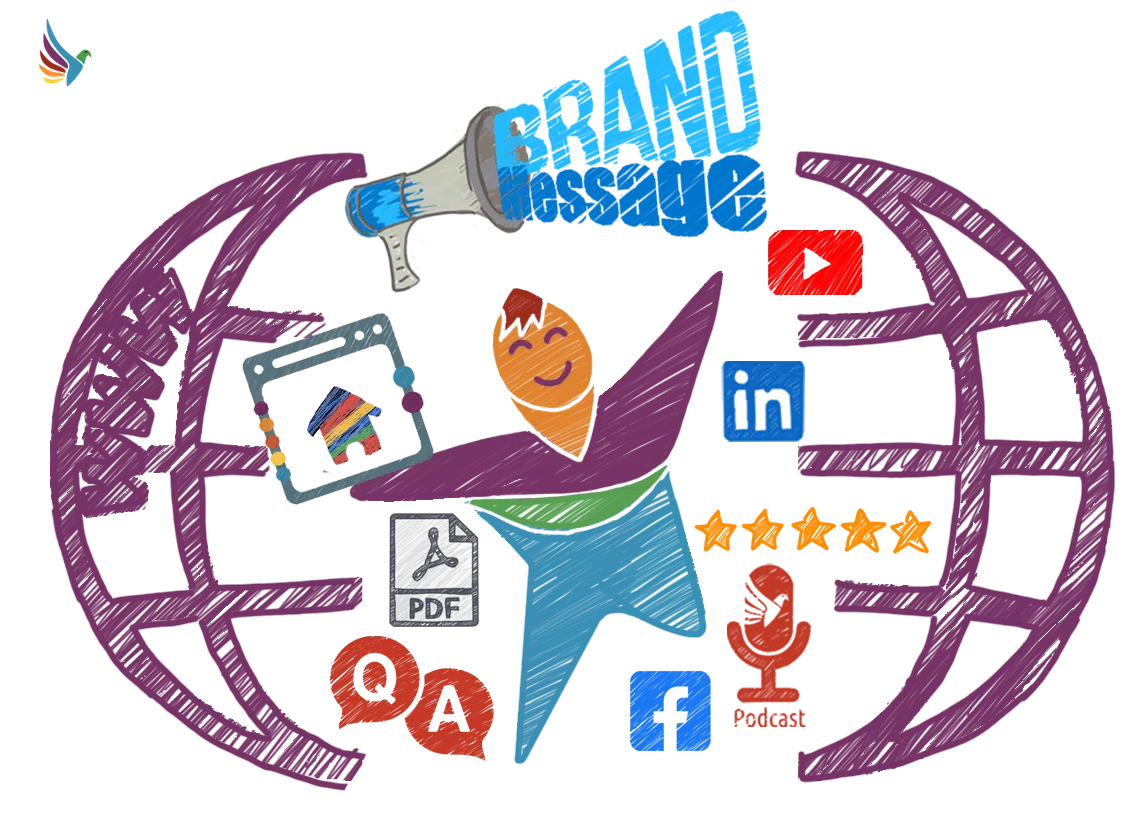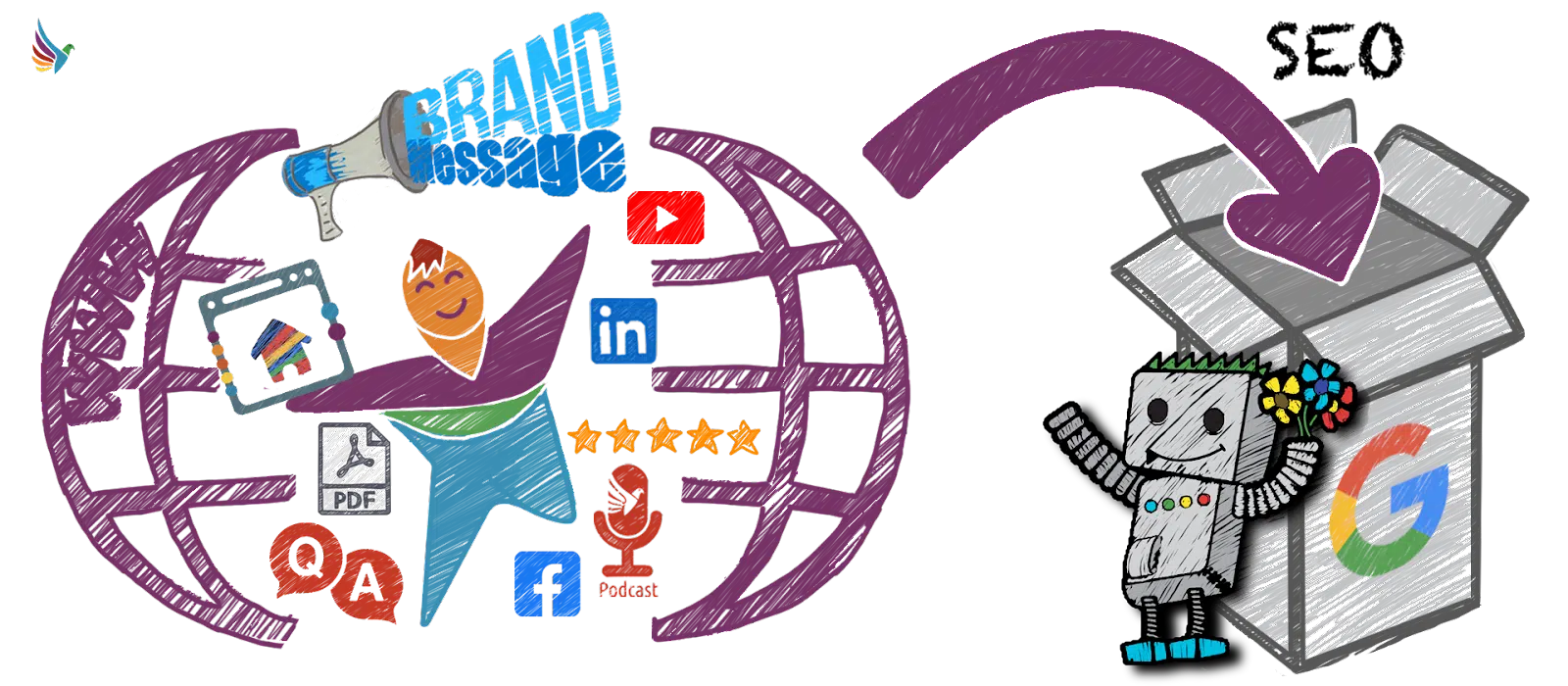Modern SEO is about developing a cohesive brand identity and implementing a content strategy that genuinely serves your target audience across the web.
This article explores a new paradigm for SEO, one rooted in effective brand building. You’ll learn:
- Why establishing brand credibility and awareness should be the priority, with Google rankings being a byproduct of providing remarkable content.
- How to shift from siloed technical SEO to an integrated strategy that packages your brand in a way search engines can easily comprehend.
- Ways to communicate your unique value clearly to users and engines alike, cementing your place as the best solution for searchers’ needs.

Why brand matters when communicating with your audience
If you’re still treating SEO as a siloed or primary strategy, it’s time for a paradigm shift.
Modern SEO is packaging a brand’s marketing efforts and online presence to align with Google’s framework.
Google builds its understanding of a brand across its entire digital ecosystem, not just its website. More than building a “Google-friendly” website, your SEO efforts should involve developing a web-wide branding and marketing strategy and packaging the relevant parts for Google.
A brand is vital for a business, enabling communication and presenting a unique identity, voice, personality and emotional connection to the audience. Without it, a business lacks a meaningful presence.

A brand is the cornerstone of marketing, shaping how a business:
- Communicates with customers.
- Positions itself in the market.
- Is perceived in terms of value.
Skillfully managing and conveying a strong brand message empowers your business to influence customer behavior, fostering confidence and trust, ultimately leading customers to choose you over competitors.
Without a central brand pillar, your business lacks direction and purpose in communication, leading to disjointed messaging that fails to captivate consumers.
Investing time in understanding and developing a unique brand – from values to company culture, voice and message – is crucial for meaningful audience connections.
Consistent branding across customer touchpoints builds recognition and loyalty. Every team member must embody the brand in their roles, whether creating marketing materials or engaging with clients, for a cohesive representation of the brand as a business entity.
A consistent brand narrative across every touchpoint on every relevant platform enhances the customer acquisition funnel. It communicates a clear brand message to search engines like Google and Microsoft Bing so that they can confidently understand:
- Who you are.
- What audience you serve.
- Why that audience chooses you above the competition.
Get the daily newsletter search marketers rely on.
Marketing: Position yourself where your audience looks, present your solution to their problem
Brand comes first, marketing second.
Without a solid brand, a business has nothing to market. A great brand can create marketing materials, online and offline, with a message that addresses the problems its audience is facing.
The brand voice resonates with the audience because it appeals to their emotions.

Marketing strategically positions a brand where its audience actively seeks solutions by crafting and disseminating messages that address audience problems and present the brand as the needed solution.
Knowing where potential customers search – whether YouTube for tutorials, LinkedIn for professional advice or Google for immediate answers – enables you to customize marketing efforts and be present in those spaces with relevant content.
This targeted presence ensures the business solution is readily available and top of mind when potential customers face a challenge.
Marketing is more than visibility; it’s clearly communicating the next steps your audience should take. Effective marketing guides them from awareness to decision-making, solidifying the relationship with the brand.
Providing this direction means your business solves a problem, builds loyalty and drives conversions.
Your marketing content must engage and serve the target audience, regardless of the platform it resides on. Utilize diverse content types, including:
- Text.
- Videos.
- Visuals (images and infographics).
- Audio recordings.
- Landing pages.
- Product or service pages.
Your owned, first-party website (i.e., the business’s website) is the blueprint.
Build it out with product pages, landing pages and an About us page that clearly and attractively states who you are, your target audience and why they should choose you above the competition.
Also include:
- A comprehensive FAQ page that provides simple answers to common questions and concerns the audience has.
- Downloads (i.e., PDF guides or whitepapers) that provide in-depth analysis and explanations that serve users seeking comprehensive knowledge or solutions.
- A blog for the content that fits in between these two extremes (and can also be an opportunity to simply entertain and engage).
Second-party (semi-owned) websites, like the brand’s social media pages, are integral to a content strategy. Platforms like Facebook, X, LinkedIn, Instagram, Pinterest and TikTok have unique formats and user expectations that require tailored content to engage with different segments of an audience effectively.
Third-party sites such as review platforms (e.g., Trustpilot), forums (Reddit and Quora) and media outlets where guest posts, featured articles and news are published are essential, too.
Your marketing content needs to:
- Correspond to the platform.
- Resonate with the intended audience on those platforms.
- Address real problems and needs.
- Maintain consistency in brand messaging.
What types of content can brands use for marketing and packaging for Google?
Create profitable marketing content that stands on its own, independent of Google traffic.
This approach makes business sense as the content educates the audience, moves potential customers down the funnel and generates revenue before considering Google.
SEO becomes a natural extension and revenues from Google traffic are a bonus on the business cake.
Below are the types of content you can use for marketing and packaging for Google:
Text
- Blog posts providing helpful information.
- Viral text-based posts designed to encourage sharing.
- Educational articles offering expertise.
- Event announcements.
- Company news.
- Use cases demonstrating customer success stories.
- Email newsletters with value propositions that are enjoyable to read.
Landing pages and service pages
- Pages crafted with clear calls to action (CTAs) encourage user engagement, whether signing up for newsletters or making purchases.
Downloads
- High-value resources like ebooks or guides in exchange for contact details help build an email list while providing users with useful information.
Blog
- Informative, entertaining mid-length content that your audience will want to share.
- Easy for you to repurpose on social media and in newsletters.
FAQs
- Frequently asked questions help preemptively solve customer issues and reduce customer support overhead.
Videos
Visuals
- Infographics condense complex data into digestible graphics that communicate ideas and reflect brand identity.
Audio
Social media
- Each platform requires a different approach – and the goal is to build a loyal community around the brand through engaging posts and interactions.
- Choose 2 or 3 most relevant since your core audience will not hang out on every channel.
Forum content
- Engage with your audience, both those talking about you and the problems your business solves.
- Forum posts often lack context and that hinders search performance. In your forum posts, take the opportunity to provide context that will help the engines.
Crafting cohesive marketing assets across various channels makes your brand visible and communicates its value proposition where potential customers spend time online.
Marketing enhances your brand’s core values by delivering a clear and purposeful message to the right audience when they need it.
Package your brand and marketing with SEO, showcasing your business as the top solution
Crafting targeted marketing messages and sharing them on platforms frequented by your audience is common sense.
Optimizing your content for Google and Microsoft Bing involves making it algorithm-friendly, enhancing credibility and reaching potential customers within the subset of search engine users.

Look at it from the perspective of universal search. Google presents diverse content in various formats to address customer needs.
Brand content exists on both on-site (business-owned platforms) and off-site (external platforms). Google analyzes the entire digital ecosystem and a business’s web-wide marketing efforts.
When creating content, consider the following carefully:
- Who it is for: Identify the target demographic or persona that will consume the content.
- What purpose it serves: Determine what problem or need the piece of content addresses.
- The best format: Decide whether the content is better as a blog post, video, infographic, podcast episode, etc., based on what effectively conveys the message.
- Where to put it: Choose whether the content belongs primarily on your site or if another platform offers better exposure or engagement.
- How to package it for Google: Use traditional SEO techniques such as keyword optimization, structured data markup (Schema), video captions, semantic HTML5 etc., so search engines can easily understand and use your content.
When creating marketing material, consider these factors to ensure the content connects with the target audience.
Packaging for Google and Microsoft Bing gives the content a strong chance of being recognized by search engines as worthy material to present when someone searches relevant queries related to the business offer.
Remember: The goal of SEO isn’t just visibility or clicks. Your aim is to effectively communicate with your audience through visibility on search engines.
Modern SEO: Packaging your message for clarity and impact
SEO is not a standalone marketing strategy. It works best when it supports and relies on your web-wide digital marketing strategy.
Ironically, a smart SEO strategy involves pretending search engines don’t exist. Instead, focus on:
- Creating content that resonates with the target audience.
- Branding content effectively.
- Strategically placing content where your audience is most active and in the format they prefer.
Modern SEO condenses a brand’s marketing content for easy understanding by Google.
When users search, your business should stand out as the best answer due to Google’s confidence in understanding your brand across the web.
Modern SEO is about clear communication with the audience and search engines, turning Google and Microsoft Bing into significant channels for reaching your target market.
Opinions expressed in this article are those of the guest author and not necessarily Search Engine Land. Staff authors are listed here.
Source link : Searchengineland.com
